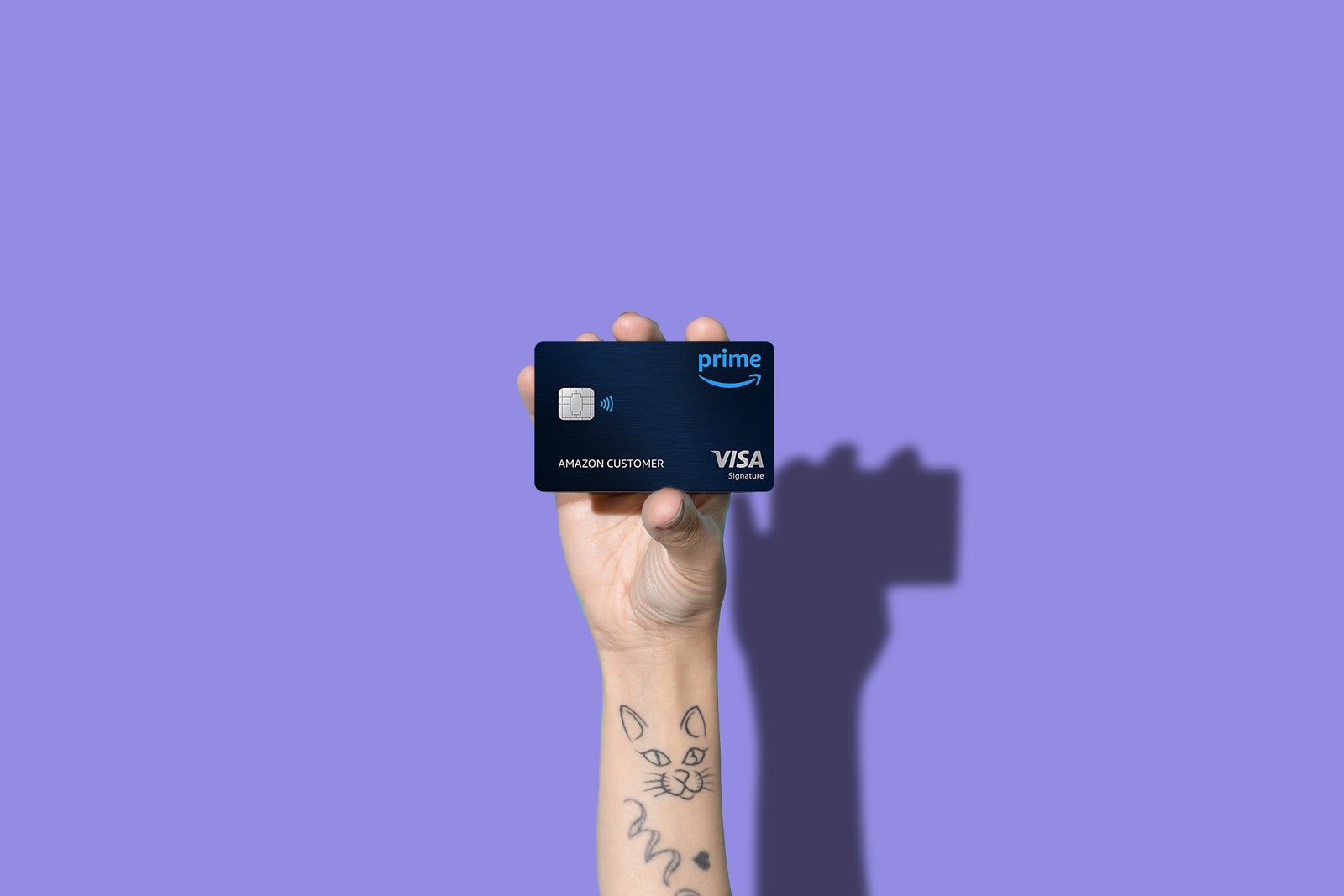Amazon is the giant in the room for easy, instant access to hundreds of thousands of different products.
While the Prime Visa (see rates and fees) doesn’t technically have an annual fee, one of its caveats is that you have to be an Amazon Prime subscriber to qualify. A Prime membership costs $14.99 monthly or $139 yearly.
Amazon Prime Day began July 8 at 12:01 a.m. PDT and will run until midnight July 11. Since Prime Day is here, it’s an excellent time to use your Prime Visa if you’re an existing cardholder or apply for it now and take advantage of the welcome offer for your upcoming purchases.
It’s hard to assess the value of a Prime membership based solely on the return you might get using the online retailer’s credit card — because membership includes so many other tangible benefits — but for argument’s sake, we’re going to try.
Related: 8 ways to save money on Amazon orders
Welcome offer
The Prime Visa currently offers a $250 Amazon gift card instantly upon approval, exclusively for Prime members.
You will get it instantly upon approval. This is a solid bonus, especially considering no spending is required, and you can use the gift card from day one.
Related: The best credit card welcome bonuses this month
Earning rates
The Prime Visa earns cash back. This card earns:

Daily Newsletter
Reward your inbox with the TPG Daily newsletter
Join over 700,000 readers for breaking news, in-depth guides and exclusive deals from TPG’s experts
- 5% on Amazon, Amazon Fresh, Whole Foods and Chase Travel℠
- 2% on restaurants (including takeout), gas stations and local transit and commuting
- 1% on all other purchases
This is the best consistent return you’ll find for Amazon purchases and a respectable — if unremarkable— return on the 2% categories. Also, for a limited time during Prime Day (July 8 to 11), cardholders with an eligible Prime membership can also earn 7% back with no-rush delivery on eligible items.
There’s no cap on the cash-back value you can earn, and you can redeem your rewards to pay for all or part of your Amazon purchases. In addition to cash back, you can also redeem your rewards for cash back, gift cards or travel at Chase.com.
Related: Best cash-back credit cards
How should you use the card?
This should be your go-to card at Amazon and Whole Foods to maximize the unlimited 5% cash back. If you want a simple card setup, you could pair this card with a 2% cash rewards card like the Wells Fargo Active Cash® Card (see rates and fees) to ensure you earn at least 2% on your purchases.
However, multiple cards earn at least 3% or more on restaurants, gas stations and local transit and commuting, like the American Express® Gold Card, which earns 4 points per dollar spent on restaurants worldwide (on the first $50,000 in purchases per calendar year; then 1 point per dollar), and the Blue Cash Preferred® Card from American Express, which earns 3% cash back at U.S. gas stations and local commuting and transit. (Cash back is received in the form of Reward Dollars that can be redeemed as a statement credit or at Amazon.com checkout.)
Related: The best credit cards for Amazon purchases
Earning your membership fee back
Now, let’s figure out your break-even cost for signing up for a Prime membership and using the Prime Visa card.
But beyond the first year, you’d have to spend about $2,780 at Amazon or Whole Foods during the following years to earn enough cash back to pay off a Prime subscription cost.
Here’s the breakdown: $139 divided by $0.05 (5%) = $2,780
A 2024 Consumer Intelligence Research Partners analysis found that the typical Amazon Prime member spends about $1,100 a year with the retailer. That’s not enough spending to justify getting a Prime membership for the sole purpose of getting the credit card.
If, for example, you spend about $1,800 on Amazon and Whole Foods in a year, that would net you $90 cash back — well short of the $139 Prime membership fee.
Related: The best credit cards for online shopping
Other card benefits
With this card, you’ll also receive a myriad of other benefits, including:
These are some solid benefits, especially for a card with no annual fee.
Related: Earn points, miles or cash back: How to maximize online shopping portals for your purchases
Calculating your Prime Visa value
Determining whether it’s worth paying the Prime membership fee to get the Prime Visa is extremely subjective. Some may find incredible value in the 5% back on Amazon and Whole Foods purchases.
If you’re an Amazon Prime member and spend a lot at Amazon, this card makes perfect sense for you. There’s also value in the membership because of the Prime Video and Amazon Music streaming services — easily justifying the $139 annual cost. Throwing in a rewards credit card on top of that is just icing on the cake.
However, if you won’t utilize the Prime membership benefits and are considering getting Prime just for this card, carefully calculate whether you’ll earn enough on the card to justify the Prime membership cost. You’ll likely find that you’re better off using a flat-rate cash-back or travel rewards credit card instead.
Related: Comparing flat-rate with bonus-category cash-back credit cards
Bottom line
If you already have an Amazon Prime membership, the Prime Visa is a great addition to your wallet as it has no annual fee. You can’t beat 5% cash back every time, especially if you spend a lot at Amazon or Whole Foods. However, if you are not a Prime member or want to earn flexible points, you should consider other cards.
For more information, read our full review of the Prime Visa.
Apply here: Prime Visa

















